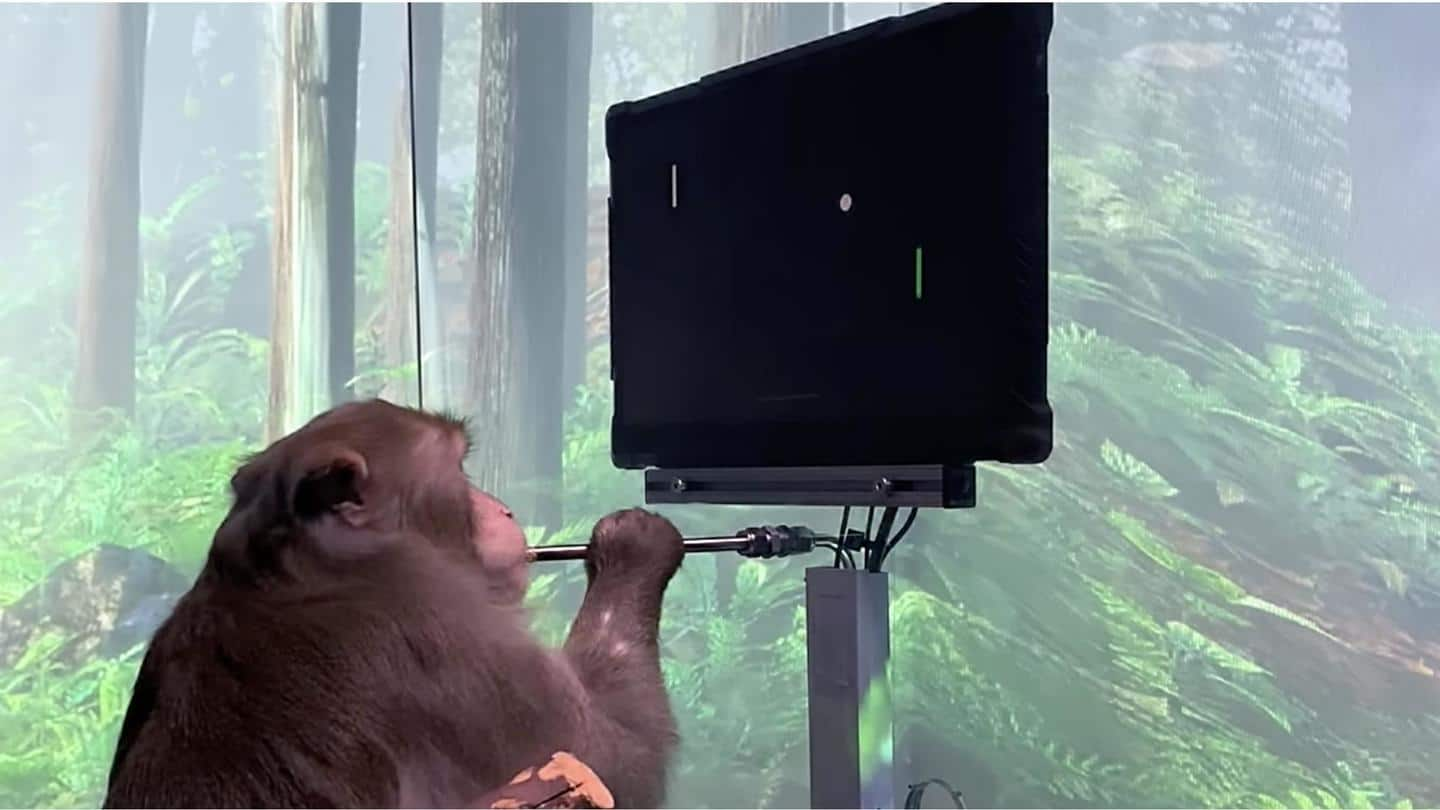
Neuralink shows off monkey's Pong skills using wireless brain-computer interface
What's the story
Elon Musk's 2016 start-up called Neuralink has been working on a brain-machine interface with a reasonable amount of success. Following the previous live demonstration featuring pigs, the company's latest progress update demonstrates a Macaque monkey named Pager playing pong using a joystick and then using signals from his mind. Neuralink intends to create a wireless interface between the human mind and a computer.
Brief history
Earlier demonstration showed neural implant detecting signals from pig's snout
The company's previous live demonstration showed off how an implanted Neuralink device was able to pick up signals from a pig's nervous system whenever the animal touched something with its snout. In the latest video demonstration, the narrator says that nine-year-old Pager has an "implanted neural data recording and transmission device" called the N1 Link.
Details
After calibration, neural implant was able to predict monkey's movements
Initially, the implanted device gathered baseline data when Pager moved a joystick to direct an on-screen ball toward a colored square. This way, the joystick movements were correlated to the impulses being picked up by the implanted N1 Link. Later in the video, the joystick was disconnected. Although Pager continued to use it, the on-screen ball was completely controlled by the Neuralink implant.
Monkey Pong
N1 Link was implanted in motor cortex responsible for movements
Neuralink's demonstration proceeded to show Pager play a game of MindPong interfacing with the computer using just the implanted N1 Link. The implant used machine learning to predict Pager's movements before they occurred. The video's narrator explained that the N1 Link was implanted in the hand and arm areas of the motor cortex, a part of the brain responsible for planning and executing movements.
Geeky details
Voltage traces from electrodes are decoded into on-screen cursor movements
Pager's implant contains over 1,024 electrodes. The voltage traces (called spikes) recorded by them once every 25 milliseconds are transmitted to a proprietary decoder software via Bluetooth. The decoder outputs velocity signals which are integrated over time to direct on-screen cursor movement. Musk had previously said that commercial-spec Neuralink devices could include 3,072 electrodes per array across 96 threads.
Myriad possibilities
Neuralink could enable paraplegics to walk again: Musk
Neuralink's accompanying blog post suggests that just like Pager, paralysis patients would be able to manipulate a computer's cursor. The applications could be extended to typing on a virtual keyboard, the company added. Musk went a step further on Twitter, suggesting that multiple implants working in synchrony could shunt signals from the brain to the limbs, possibly enabling paraplegics to walk.
Twitter Post
CEO Musk shares some of Neuralink's wild possibilities
Later versions will be able to shunt signals from Neuralinks in brain to Neuralinks in body motor/sensory neuron clusters, thus enabling, for example, paraplegics to walk again
— Elon Musk (@elonmusk) April 9, 2021